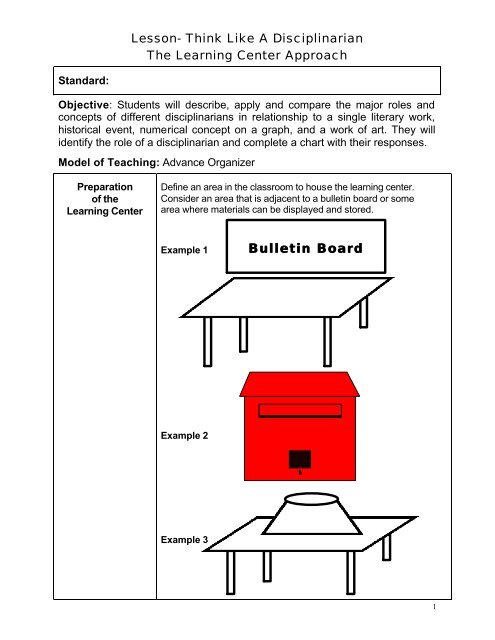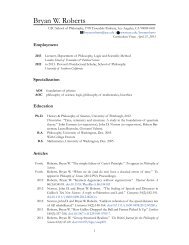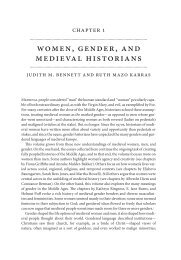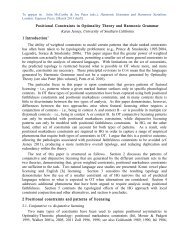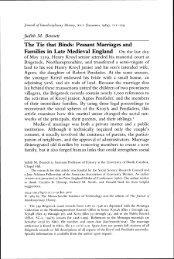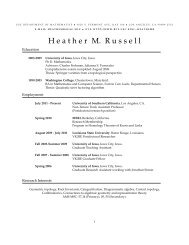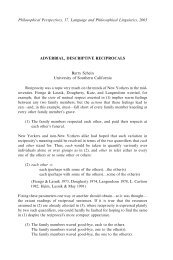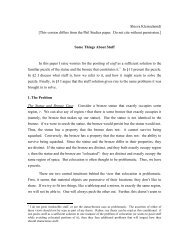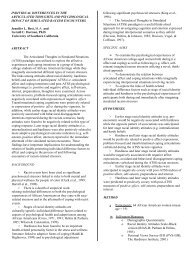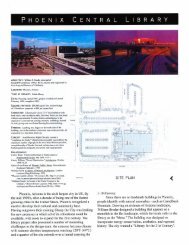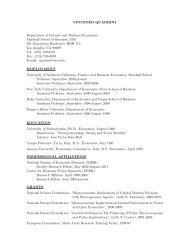Think Like A Disciplinarian - Usc
Think Like A Disciplinarian - Usc
Think Like A Disciplinarian - Usc
You also want an ePaper? Increase the reach of your titles
YUMPU automatically turns print PDFs into web optimized ePapers that Google loves.
Standard:<br />
Lesson- <strong>Think</strong> <strong>Like</strong> A <strong>Disciplinarian</strong><br />
The Learning Center Approach<br />
Objective: Students will describe, apply and compare the major roles and<br />
concepts of different disciplinarians in relationship to a single literary work,<br />
historical event, numerical concept on a graph, and a work of art. They will<br />
identify the role of a disciplinarian and complete a chart with their responses.<br />
Model of Teaching: Advance Organizer<br />
Preparation<br />
of the<br />
Learning Center<br />
Define an area in the classroom to house the learning center.<br />
Consider an area that is adjacent to a bulletin board or some<br />
area where materials can be displayed and stored.<br />
Example 1<br />
Example 2<br />
Example 3<br />
Bulletin Board<br />
1
Preparation<br />
of the<br />
Learning Center<br />
(continued)<br />
Prepare the set of open-ended <strong>Think</strong> <strong>Like</strong> A <strong>Disciplinarian</strong> task<br />
cards:<br />
<strong>Think</strong> <strong>Like</strong> A<br />
Sociologist<br />
Describe the of<br />
the group dynamics<br />
or interactions<br />
among people.<br />
Write a paragraph.<br />
<strong>Think</strong> <strong>Like</strong> An<br />
Historian<br />
Describe the<br />
affecting the causes<br />
and effects or<br />
implications of the<br />
event.<br />
Write an essay.<br />
Select the literary work, historic event, artistic rendering and<br />
graph students will study. Note that the alignment of the references<br />
to the same time period, theme, or concept facilitates<br />
the students' abilities to apply the <strong>Think</strong> <strong>Like</strong> A <strong>Disciplinarian</strong><br />
roles and concepts.<br />
Tall Tales of<br />
Paul Bunyan<br />
<strong>Think</strong> <strong>Like</strong> A<br />
Geographer<br />
Describe the<br />
of the movement in<br />
the location.<br />
Create a<br />
C H A R T<br />
<strong>Think</strong> <strong>Like</strong> An<br />
Mathematician<br />
Describe the<br />
situation in<br />
numerical values.<br />
Use the to<br />
develop a scenario<br />
to problem solve.<br />
Life on the<br />
Oregon Trail<br />
Demographics of the<br />
Oregon Trail<br />
32 21 14 12<br />
M W B G<br />
2
Teach the<br />
Introductory<br />
Lesson- Motivation<br />
Present the<br />
Advance Organizer<br />
Present the following chart to students and ask them to MATCH<br />
the roles with the language of the discipline and of the<br />
disciplinarian.<br />
A Statistician 1. Inoculate<br />
B. Botanist 2. Value<br />
C. Zoologist 3. Arrangement<br />
D. Sociologist 4. Chronology<br />
E. Historian 5. Group Dynamics<br />
Discuss why certain matches were made by asking the question:<br />
"what is the relationship between the work people do and the<br />
specific language they use to describe that work?<br />
Ask students to make paired additions to the chart. For<br />
example:<br />
Ecologist - Conservation<br />
Geologist - Erosion<br />
Meteorologist - Forecasts<br />
Introduce these sets of disciplinarians and concepts:<br />
Sociologist - Group Dynamics<br />
Geographer - Movement, Location<br />
Historian - Causes/effects and<br />
implications<br />
Mathematician - Distribution<br />
3
Practice with the<br />
Advance Organizer<br />
Large Group<br />
Setting<br />
Apply the<br />
Advance Organizer<br />
Summarize and<br />
Integrate Learning<br />
of<br />
Advance Organizer<br />
Introduce and use the task cards and apply to previously studied<br />
areas in a discipline or a related topic.<br />
Note examples: Sociology - Group Dynamics<br />
(previously read story)<br />
Mathematician - Numerical Values<br />
(previously learned historical event)<br />
Send students to the Learning Center using a rotational, self-<br />
selected or assigned pattern.<br />
Instruct students to use the task cards and materials at the<br />
center (historical event, literary work, etc.) to apply the task<br />
cards.<br />
Prepare and display an "add on chart" at the learning center for<br />
students to complete as they work on the task cards.<br />
Note that students put up post-its with their names to record their<br />
"findings."<br />
Use this chart to conduct discussions about <strong>Think</strong>ing <strong>Like</strong> A<br />
<strong>Disciplinarian</strong>.<br />
Use these questions to conduct discussions:<br />
~ What pattern between and among the disciplinarians<br />
do you notice?<br />
~ How does the language of the disciplines affect the<br />
work of a disciplinarian?<br />
~ How do contemporary economic, social, political and tech-<br />
nological trends affect the work of a disciplinarian?<br />
Add On Information Chart<br />
Sociologist<br />
Mathematician<br />
Geographer<br />
Historian<br />
4


